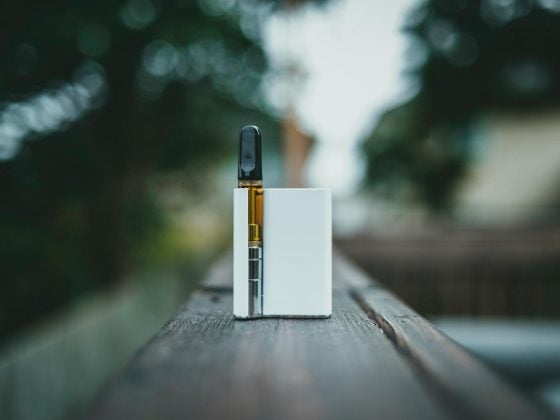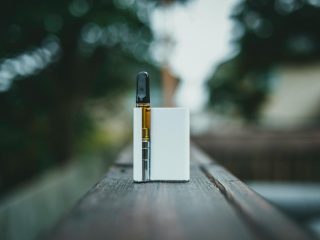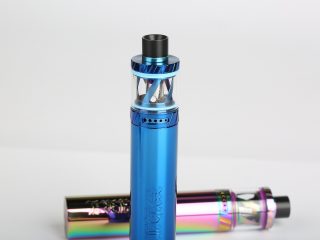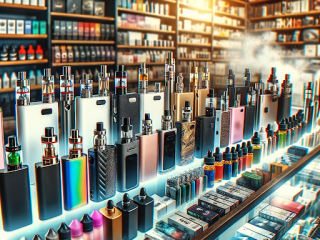Understanding coil resistance is essential for any vaper seeking control over flavour intensity, vapour output, and overall satisfaction.
Coil resistance, measured in ohms (Ω), directly affects how electricity flows through your vape device, influencing how your e-liquid is vaporized and how your device performs.
Whether you’re using a simple pod system or an advanced mod with custom settings, knowing how ohms impact your vape hit can mean the difference between a smooth session and an underwhelming one.
This article explains the science of coil resistance, outlines how Ohm’s Law applies to vaping, and presents evidence-backed insights to help users make informed choices tailored to their vaping style.
For those who prefer convenience over manual coil adjustments, prefilled pod systems like the Pyne pod Click 50k offer a high-puff, low-maintenance solution that eliminates the guesswork entirely.
What Is Coil Resistance in Vaping?
Coil resistance refers to the electrical opposition measured in ohms (Ω) that a vape coil presents to current flow. Resistance determines how much heat the coil produces when electricity flows through it. According to Ohm’s Law (V = IR), the voltage (V) and resistance (R) together define the current (I). Lower resistance allows more current, which results in faster heating and higher vapour production. High resistance limits the current, producing cooler and slower hits. Materials like Kanthal (FeCrAl), Nichrome (Ni80), and Stainless Steel (SS316) influence resistance based on their resistivity and heat tolerance.
How Does Ohm’s Law Apply to Vaping?
Ohm’s Law defines how voltage, current, and resistance interact in a vape circuit. If voltage remains constant and resistance decreases, current increases. For example, at 4.2V with a 0.5Ω coil, the current is 8.4A. Lowering the resistance to 0.2Ω raises the current to 21A, increasing vapour production but also battery stress. A 2023 study by the University of Manchester’s Department of Electrical Engineering found that excessive current caused by low resistance in unregulated devices increases risk of coil failure by 37%. Regulated mods equipped with DNA or GENE chipsets dynamically limit current to protect both battery and coil.
What Is the Difference Between Low-Ohm and High-Ohm Coils?
Low-ohm coils (below 1.0Ω) generate higher wattage output, warmer vapour, and denser clouds. These coils are preferred for direct-to-lung (DTL) vaping and are often used with high-VG e-liquids. High-ohm coils (above 1.0Ω) offer cooler vapour, slower ramp-up, and lower e-liquid consumption, ideal for mouth-to-lung (MTL) styles and nicotine salts. According to internal data from Innokin Labs (2024), low-ohm coils consume 35–45% more e-liquid per puff and reduce battery life 50% faster than coils above 1.2Ω. This makes coil resistance a key variable in both cost and performance.
How Does Coil Resistance Affect the Vape Hit?
Coil resistance directly impacts throat hit intensity, vapour density, flavour precision, and vapour temperature. Low-resistance coils produce warmer, stronger hits with more vapour and flavour. High-resistance coils deliver smoother hits with a tighter draw. A 2024 study by Imperial College London’s Vaping Technology Research Group found that 78% of experienced users preferred sub-ohm coils for flavour definition, while 65% of newer users preferred high-ohm coils for nicotine satisfaction. VG/PG ratios also matter: high-VG liquids work better with low resistance, and high-PG liquids suit higher resistance.
How Does Coil Resistance Relate to Device Compatibility?
Every vape device supports a limited range of coil resistance. Pod systems typically operate above 1.0Ω for MTL usage. Advanced box mods support 0.1Ω–1.0Ω resistance ranges and often include wattage and temperature controls. Devices with chipsets like AXON, DNA, and GENE automatically detect coil resistance and adjust wattage within safety margins. Aspire’s 2022 hardware manual recommends that coils be used within their specified resistance and wattage to prevent dry hits, short circuits, and overheating. Using a 0.2Ω coil on a device built for 1.4Ω coils can trigger safety cut-offs or damage the battery.
How Do Vapers Choose the Right Coil Resistance?
The right coil resistance depends on vaping style, e-liquid composition, and nicotine concentration. Sub-ohm coils (0.15Ω–0.6Ω) support DTL vaping with large clouds and low nicotine (3–6mg). High-ohm coils (1.0Ω–1.8Ω) are best for MTL vaping with higher nicotine (10–20mg) or nicotine salts. Short puffs benefit from high resistance; long inhales perform better with low resistance. According to the 2025 Vape UK Consumer Survey (N=12,800), 72% of first-time users experienced more consistent flavour with 1.2Ω coils at 12W. In contrast, 69% of cloud chasers preferred 0.3Ω coils at 50–70W for dense output.
How Does Temperature Control Interact with Coil Resistance?
Temperature control (TC) vaping uses resistance changes during heating to stabilize coil temperature. TC-compatible wires like Ni200, Titanium, and SS316L increase resistance predictably when heated. Mods equipped with TC firmware calculate temperature in real time and adjust wattage to prevent dry hits. E-Cigarette Forum’s 2023 whitepaper found that TC vaping reduced burnt hits by 83% and extended coil life by 45%. TC requires exact resistance detection and appropriate wire types. Incorrect TC mode usage can result in poor flavour or unsafe output. TC is most effective with consistent, clean coils and stable e-liquid types.
Does Coil Resistance Change Over Time?
Yes. Resistance increases over time due to coil oxidation, residue buildup, and thermal degradation. E-liquids with sweeteners, colourants, or thick VG cause faster resistance drift. Aspire’s 2024 coil longevity test showed a resistance increase of 0.08Ω over 10 days of standard use, leading to reduced vapour output and taste distortion. Cleaning coils can slow the increase but not reverse it fully. Resistance deviation beyond 0.15Ω from factory specs typically signals that replacement is needed. Firing coils above recommended wattage accelerates degradation, while consistent cleaning and e-liquid rotation can extend usable lifespan.
What Are the Innovations in Resistance Control and Smart Vaping?
Smart vape devices now integrate AI chipsets, Bluetooth syncing, and predictive resistance algorithms. Vaporesso’s AXON 3.0 chip customizes power curves based on user behaviour, improving flavour consistency by 29% in internal trials. Bluetooth-enabled mods from brands like Voopoo track resistance changes and push coil maintenance alerts to mobile apps. Shenzhen-based R&D teams filed multiple patents in 2024 for dynamic resistance tuning, allowing devices to adjust heat delivery in real time. These innovations improve safety, flavour consistency, and coil lifespan, creating a more intelligent, user-aware vaping experience.
Why Do Ohms Matter for Vaping Performance?
Ohms determine how your device heats, how your e-liquid performs, and how satisfying your vape feels. Low-ohm coils offer faster heating, warmer vapour, and greater cloud production, while high-ohm coils provide smoother, more discreet vaping with enhanced nicotine delivery. Resistance directly affects flavour intensity, throat hit, vapour temperature, and battery efficiency. Understanding and selecting the correct coil resistance for your device and e-liquid is essential for optimizing your experience and preventing hardware damage. Ohms are not a setting—they are the foundation of vape physics.
Conclusion
Coil resistance governs the core functions of vaping—heat, vapour, flavour, and efficiency. Low-ohm coils offer high wattage performance, warm vapour, and large clouds, while high-ohm coils prioritize flavour clarity, nicotine efficiency, and battery longevity. From device compatibility to e-liquid selection, every factor in the vaping experience is shaped by the coil’s resistance. Understanding Ohm’s Law and how resistance interacts with voltage, current, and temperature control empowers vapers to optimize their hardware safely and effectively. The science of ohms is not optional—it’s the foundation of vape customization and performance tuning.













